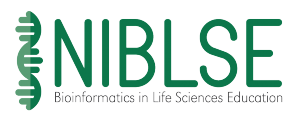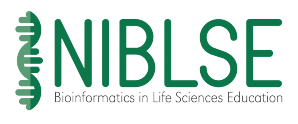Resources
Inquiry-based hypothesis testing using phylogenetic trees in MEGA
Author(s): Kristin Hultgren
Seattle University
1135 total view(s), 706 download(s)
Hultgren_Teaching Notes.docx(DOCX | 16 KB)
QUBES4-1_Primate_ADH4.docx(DOCX | 80 KB)
QUBES4-2_Zika.docx(DOCX | 100 KB)
QUBES4-3_Horse-pathogen.docx(DOCX | 123 KB)
- License terms
Description
For many undergraduates, one of the most challenging exercises in the study of evolutionary biology is developing and testing evolutionary hypotheses using phylogenetic trees. In this series of modules, modified from Kleinschmit et al. (2019), students develop predictions about tree structure under different evolutionary hypotheses, and assemble data from FASTA-formatted sequence files and databases hosted by NCBI (The National Center for Biotechnology Information). They then use the free, user-friendly program MEGA X to align sequence data and construct simple trees to test their hypotheses. These modules cover a key learning objective in biology—application of bioinformatics tools to answer a real-life biological question. Specifically, they allow students the opportunity to combine their knowledge of tree-thinking, skills in database searching (NCBI), and experience in making phylogenies (MEGA) to answer inquiry-based research questions on a range of applied topics.
Notes
- Exercise Format
- There are three stand-alone modular exercises
- Each modular exercise, student postlab worksheet, and necessary FASTA sequences are bundled into a single document along with a preface page with implementation instructions for the instructor
- The exercises have been modified to include a greater role for hypothesis development for students, and for integration with the program MEGA to align sequences and build phylogenetic trees.
- Exercise title change to mirror the associated CourseSource manuscript by Kleinschmit et al., 2019
Reference
Kleinschmit, A., Brink, B., Roof, S., Goller, C., and Robertson, S.D. 2019. Sequence Similarity: An inquiry based and “under the hood” approach for incorporating molecular sequence alignment in introductory undergraduate biology courses. CourseSource. https://doi.org/10.24918/cs.2019.5
Cite this work
Researchers should cite this work as follows:
- Hultgren, K. (2021). Inquiry-based hypothesis testing using phylogenetic trees in MEGA. Bring Bioinformatics to Your Biology Classroom, QUBES Educational Resources. doi:10.25334/FYP1-0G44

